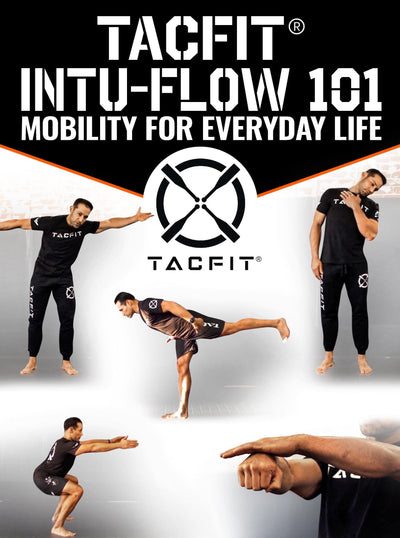The Kettlebell Side Swing
The kettlebell side swing is an engaging variation of the traditional kettlebell swing exercise, introducing a lateral movement component that targets the sides of the body and enhances core strength and stability. This variation provides an excellent opportunity to diversify your kettlebell routine and engage muscle groups often overlooked in conventional movements.
What this article covers:
- Calories Burned During a Kettlebell Swing Workout
- Double Kettlebell Swing
- Banded Kettlebell Swing
- Heavy Kettlebell Swings
To perform a kettlebell side swing, start with your feet shoulder-width apart and the kettlebell placed on the ground to the side of one foot. Grasp the kettlebell's handle with one hand, keeping your knees slightly bent and your back straight. Initiate the swing by hinging at the hips, driving your hips back, and allowing the kettlebell to swing between your legs. Unlike a standard kettlebell swing that moves forward and backward, in the side swing, you'll swing the kettlebell to the side of your body, either to the right or left, depending on the hand you're using.
As you swing the kettlebell upward, your arm should extend to the side, and the kettlebell will reach chest height. The core muscles, especially the obliques and lateral hip muscles, work vigorously to stabilize your body during this lateral movement. Ensure that you maintain proper alignment and control throughout the motion. Control the kettlebell's descent and repeat the exercise for the desired number of repetitions on one side before switching to the other.
The kettlebell side swing primarily targets the obliques, which are the muscles on the sides of your abdomen, and the lateral hip muscles. These muscles are critical for maintaining core stability and aiding in rotational movements. The dynamic nature of the side swing engages these muscles dynamically, making it an excellent choice for strengthening and toning the sides of the torso. Additionally, the glutes, hamstrings, and lower back are still actively involved, contributing to a well-rounded workout for the lower body and core.
Incorporating the kettlebell side swing into your training routine offers several benefits. Firstly, it can help improve core strength and stability. The obliques play a crucial role in rotational movements, and strengthening them can enhance overall core function. This is particularly beneficial for athletes involved in sports that require twisting or pivoting motions, such as golf, tennis, or martial arts.
Furthermore, the lateral hip muscles targeted in the side swing are essential for maintaining hip stability and preventing injuries, such as IT band syndrome or hip pain. By developing these muscles, you can improve hip strength and stability, potentially reducing the risk of common hip-related issues.
An added bonus with kettlebell based exercises is the sheer amount of variations there are to keep your workouts varied and engaging. Here are some of the most effective kettlebell swing variations.
Calories Burned During a Kettlebell Swing Workout
Kettlebell swings are renowned for their calorie-burning prowess, making them a valuable addition to fitness routines aimed at shedding excess weight and improving cardiovascular health. The amount of calories burned during a kettlebell swing workout can be quite significant, depending on several factors such as the individual's weight, the intensity of the workout, and its duration. On average, a 10-15 minute kettlebell swing workout can burn anywhere from 150 to 300 calories or more, making it a highly efficient exercise for those looking to maximize calorie expenditure.
The high-intensity, full-body nature of kettlebell swings elevates the heart rate and engages numerous muscle groups simultaneously, contributing to a substantial caloric burn. Additionally, the explosive hip drive and rapid swinging motion demand a significant amount of energy, which further enhances calorie expenditure. Incorporating kettlebell swings into your fitness routine can help accelerate fat loss and improve cardiovascular fitness, making it a versatile and effective exercise choice for individuals with various fitness goals.
Double Kettlebell Swing
The double kettlebell swing takes the traditional kettlebell swing and ramps up the difficulty by incorporating two kettlebells, one in each hand. This variation doubles the weight lifted and demands greater strength, stability, and coordination. The double kettlebell swing is particularly popular among advanced lifters and kettlebell enthusiasts for its effectiveness in building substantial strength, especially in the posterior chain. It's crucial to have a solid foundation in kettlebell technique before attempting this variation to ensure safe and effective execution. Double kettlebell swings can lead to significant muscle development and are ideal for individuals seeking to take their kettlebell training to the next level.
Banded Kettlebell Swing
The banded kettlebell swing combines traditional kettlebell training with the unique addition of resistance bands. These bands, when attached to a fixed anchor point and the kettlebell handle, provide dynamic resistance throughout the swing. As the kettlebell is swung upward, the resistance bands stretch and increase tension, intensifying the exercise and enhancing muscle engagement. The banded kettlebell swing is excellent for building explosive strength, grip strength, and muscle endurance. The dynamic nature of the resistance bands makes this variation a valuable tool for athletes and fitness enthusiasts looking to diversify their workouts and maximize strength gains.
Heavy Kettlebell Swings
Heavy kettlebell swings involve using kettlebells that are significantly heavier than usual. This variation prioritizes building raw strength and muscle mass. The added weight increases the resistance, challenging the muscles even further and promoting substantial muscle activation. Heavy kettlebell swings are particularly beneficial for experienced lifters aiming to break through strength plateaus and reach new levels of power and performance. However, it's vital to maintain proper form and gradually progress the weight when incorporating heavy kettlebell swings to prevent overexertion and potential injury.
Overall, the kettlebell side swing is a valuable addition to your kettlebell training repertoire. It not only diversifies your workouts but also strengthens key muscles involved in core stability and hip function. Whether you're looking to enhance your athletic performance, sculpt your waistline, or simply add variety to your kettlebell routine, the side swing is an effective and engaging exercise to consider.
Did you find the blog helpful? If so, consider checking out other guides:
- CrossFit Kettlebell Swings
- The Kettlebell Swing Challenge
- Kettlebell Two Hand Swing
- Kettlebell Swing for Beginners
- Alternating Kettlebell Swing
- Kettlebell Swing Form
- How to Do Kettlebell Swings
- Alternatives to Kettlebell Swings
- 100 Kettlebell Swings a Day
- Kettlebell Swings with a Dumbbell
- 10,000 Kettlebell Swing Challenge
- How Many Kettlebell Swings
- 300 Kettlebell Swings a Day
- Kettlebell Pullover
- Kettlebell Pull Exercises





